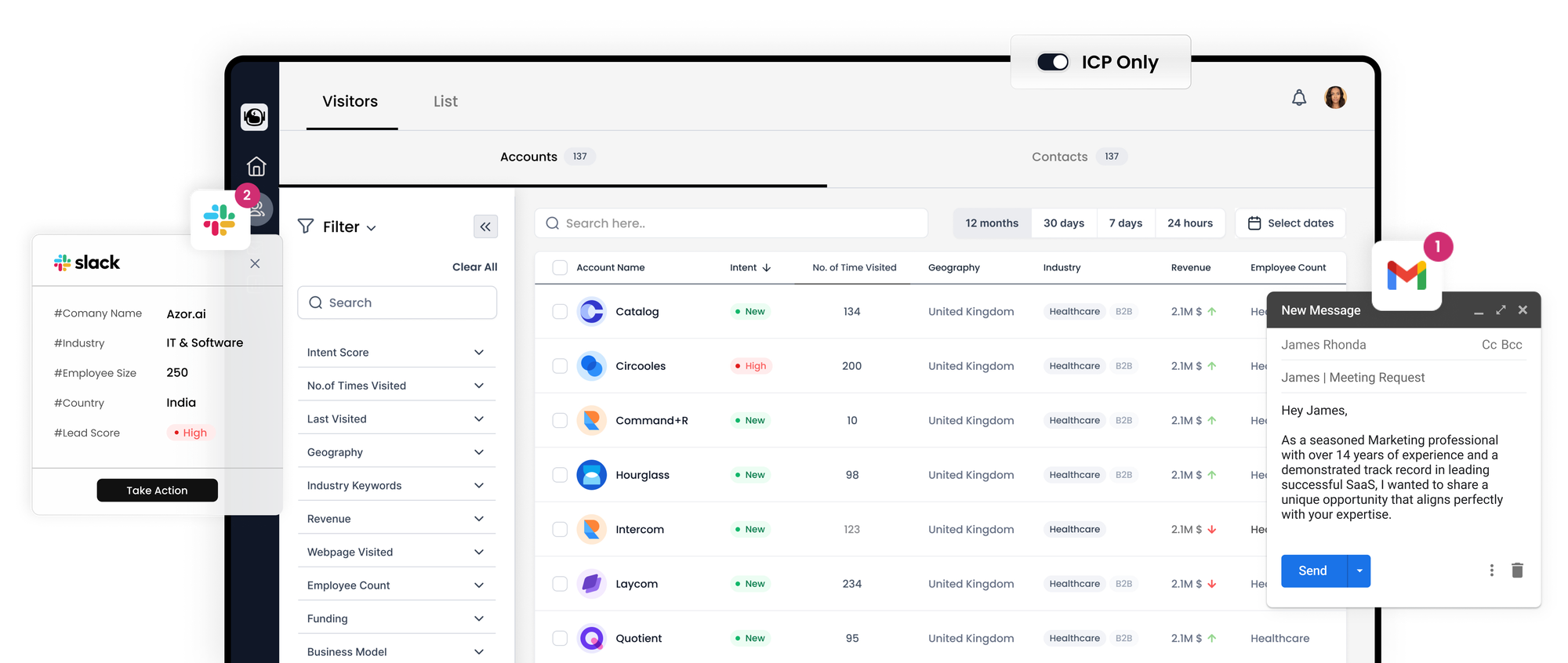Understanding B2B Marketing: Fundamentals, Strategies, and Evolving Trends

Venturing into the B2B marketing realm? Whether you're new to the scene or looking to refine your approach, this deep dive into B2B marketing offers insights into effective tactics and the latest trends to elevate your strategies.
Defining B2B Marketing
Business-to-business (B2B) marketing is the practice of promoting products or services to other businesses and organizations. It stands apart from business-to-consumer (B2C) marketing, which targets individual consumers. B2B marketing is defined by a more informational and straightforward approach, as the purchasing decisions in the business world are driven by considerations of financial return and the impact on bottom-line revenue.
Today's B2B marketing traverses a dynamic landscape, dealing with buying committees that include various stakeholders. Although this adds complexity, the rise of sophisticated data sources has enabled marketers to more effectively map out these committees and reach decision-makers with tailored, impactful content.

Who Benefits from B2B Marketing?
B2B marketing serves any entity that sells its services or products to other businesses. This includes a broad spectrum of offerings, from software subscriptions (SaaS) to security solutions and beyond. Notably, many companies operate in both B2B and B2C capacities.
B2B marketing targets individuals who have influence or direct control over business purchasing decisions. This demographic can range from users at the entry-level to top-tier executives.
Crafting a B2B Marketing Strategy
In the competitive quest for customer attention, crafting a standout B2B strategy is crucial. This involves several pivotal steps:
1. Establish a Vision
Commence with clear, measurable business goals. Opt for a strategic framework that guides your marketing efforts toward achieving these objectives.
2. Define Your Market and Buyer Persona
For B2B, understanding your niche audience is critical. Create a detailed buyer persona by researching your industry, understanding the best customer profiles, and gathering demographic data.
3. Select Tactics and Channels
Determine how and where to connect with your target audience based on their online behavior, preferred social platforms, and professional hangouts. Consider gaps your competitors might be leaving and explore how you can capitalize on these opportunities.
4. Execute Campaigns
Now, bring your strategy to life. Utilize best practices for your chosen channels, blend creativity with insight, target precisely, and employ compelling calls to action.
5. Analyze and Optimize
Continual improvement is key. Analyze performance, learn from engagement data, and refine your tactics. Track metrics, invest in what works, and alter what doesn’t based on data-driven insights.
By adhering to these steps and staying attuned to your audience's feedback, you can tailor a B2B marketing strategy that not only meets the current market demands but also positions you for future growth.
B2B Marketing Strategies and Content Types
Explore the array of B2B marketing approaches and content types that can enrich your marketing mix:
Blogs: An essential component for any content strategy, regularly updated blogs enhance organic search presence and attract inbound traffic.
SEO: Continually evolving SEO demands constant attention to Google’s algorithm updates. Modern SEO shifts focus from keywords to understanding searcher intent.
Social Media: Incorporating both organic and paid strategies, social media platforms offer a space to engage with prospects actively seeking information on vendors for purchase decisions.
Whitepapers, eBooks, and Infographics: These rich content formats, often loaded with valuable insights, can be offered directly or through gated access, functioning as powerful lead generation tools.
Email Marketing: Despite challenges like spam filters, email remains a staple in the communication toolbox, though its impact may be diminishing.
Video Content: A versatile and engaging content format, video can enhance various marketing channels, including blogs, social media, and emails.
Live Streams and Webinars: LinkedIn Live, for example, significantly outperforms regular videos in terms of engagement and interaction, making it an effective platform for expertise demonstration, innovation showcasing, and culture peeking.
Customer Success Stories and Testimonials: In the B2B world, where credibility is currency, showcasing real-world success stories and customer accolades is non-negotiable.
Podcasts: As the popularity of podcasts continues to surge, marketing your professional-audience-targeted podcast on platforms like LinkedIn can help grow your audience.
Incorporating these tactics and content types into your B2B marketing strategy can not only enhance your presence across different platforms but also cater to the varied informational needs of your prospective clients.
B2B Marketing Essentials: Definition, Strategies, and Emerging Trends
Embarking on B2B marketing and curious about its intricacies, strategies, and how to excel in today's market landscape? Dive into this comprehensive guide, which illuminates the facets of modern B2B marketing strategies.
Understanding B2B Marketing
B2B marketing, or business-to-business marketing, pertains to the tactics and methodologies used to promote products or services to other businesses and organizations. It contrasts with B2C marketing, which targets individual consumers.
B2B marketing content often adopts a more informative and straightforward tone than B2C, catering to organizations focused on ROI and revenue impact. Today’s B2B marketing navigates a complex environment of buying committees with various stakeholders, making it a dynamic and nuanced field.
B2B Marketing’s Target Audience
B2B marketing targets the spectrum of companies selling to other businesses, which can range from SaaS platforms to office supplies. These campaigns aim at individuals within businesses who influence purchasing decisions, which can include a diverse range of positions and roles, from end-users to C-suite executives.
Crafting a B2B Marketing Strategy
The battle for customer attention in a crowded B2B market necessitates a solid strategy. Here’s how B2B companies distinguish themselves:
1. Cultivate a Vision
Setting measurable business objectives and a strategy to reach them is the first step to B2B marketing success.
2. Define Your Market and Persona
Understanding your target audience's specific challenges and needs enables you to create relevant messaging. Developing buyer personas helps in tailoring your approach.
3. Select Tactics and Channels
Identify where and how to reach your target audience. This involves understanding their online behavior, content preferences, and decision-making processes.
4. Execute Campaigns
Implement a mix of content and campaigns, ensuring creativity, relevance, and strong calls to action.
5. Analyze and Optimize
Continuously measure your performance and adapt your strategies based on what resonates with your audience.
B2B Marketing Tactics and Formats
To enhance your B2B marketing strategy, consider including:
- Blogs for organic traffic and thought leadership.
- SEO to align with the latest search engine algorithms and searcher intent.
- Social Media for both organic and paid reach.
- Rich content like Whitepapers, eBooks, and Infographics, which can serve as lead magnets.
- Email Marketing for direct communication.
- Video Content, the driving force behind many successful strategies.
- Live events and Webinars for direct engagement.
- Case studies and Testimonials to build credibility.
- Podcasts for a growing professional audience.
Best Practices in B2B Marketing
Key pillars for a successful B2B marketing approach include:
- Humanize your marketing to connect with individuals, not just businesses.
- Balance precision and volume when targeting to influence various decision-makers.
- Leverage thought leadership to impact decisions and justify higher price points.
- Always keep context in mind to deliver relevant content.
- Utilize LinkedIn’s robust marketing solutions to reach a professional audience effectively.
By honing in on these best practices and continuously refining your B2B marketing strategies in line with emerging trends, your business can carve out a distinct place in the competitive B2B marketplace.
